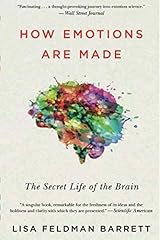Emotions represented using color, form, space
Modeling Emotions: Feeling, Context, Experience:
Recent research in Neuroscience, Cognitive Science, and Computer Science have transformed the understanding of brain, body science.
Theory of Constructed Emotions:
A scientific theory to explain the experience and perception of emotion. This theory was proposed by Lisa Feldman Barrett to resolve the "emotion paradox," which has perplexed emotion researchers for decades. Wikipedia
"In every waking moment, your brain uses past experience, organized as concepts, to guide your actions and give your sensations meaning. When the concepts involved are emotion concepts, your brain constructs instances of emotion."
Joseph E. LeDoux "Feelings: What Are They & How Does the Brain Make Them?" Joseph E. LeDoux (PDF)
Rational thought has always been treated as a product of the mind, and emotions were traditionally viewed as belonging to the body.
Feeling our Emotions: The Difference between Feelings and Emotions. A. Damasio, Scientific American
Damasio: In everyday language we often use the terms interchangeably. This shows how closely connected emotions are with feelings. But for neuroscience, emotions are more or less the complex reactions the body has to certain stimuli. When we are afraid of something, our hearts begin to race, our mouths become dry, our skin turns pale and our muscles contract. This emotional reaction occurs automatically and unconsciously. Feelings occur after we become aware in our brain of such physical changes; only then do we experience the feeling of fear.
Recommended Books:
How Emotions are Made: Lisa Barrett

Lisa Barrett argues that we construct our emotions, based on social context, personal experience, and situational goals. This suggests that individuals can modify emotions to improve well-being.
Last updated
Was this helpful?